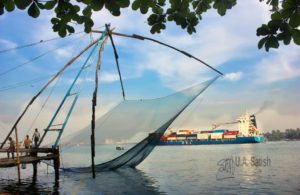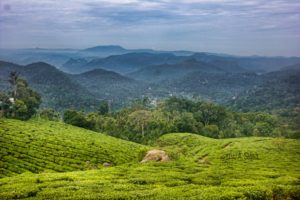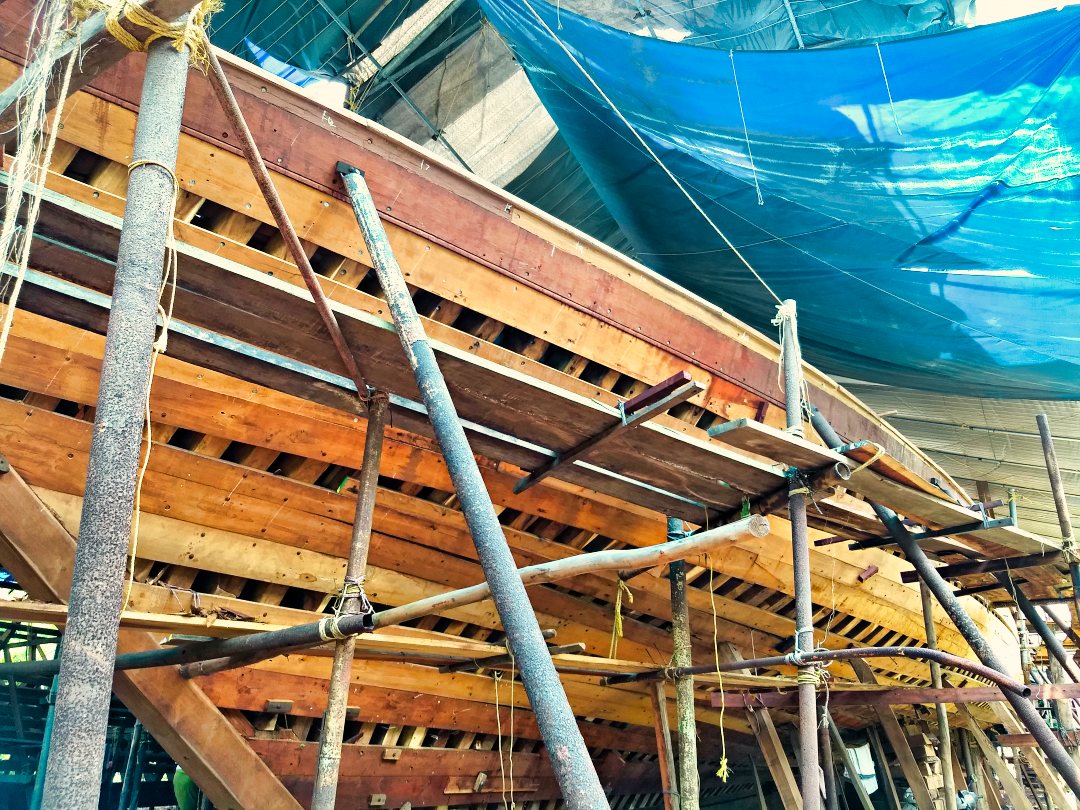Uru is a large handcrafted ocean-going boat. Master craftsmen build the boats in Beypore town near Kozhikode. They do not make use of technical drawings, reference manuals or blueprints. Urus take shape entirely from the memory and imagination of the master craftsmen. The boats were traditionally used for transporting goods and people. Most of them today go to countries in the Arabian Gulf as luxury boats.
Construction of Uru
When we visited Beypore, we made use of the opportunity to see the making of an Uru. We reached a sleepy lane, not far from Beypore beach. There were no signs to indicate the location of the boat building yard. Boat-building activities engage a number of workers. Stilts prop up the hulls on the banks of River Chaliyar. The wide-bottomed hulls ensure stability.
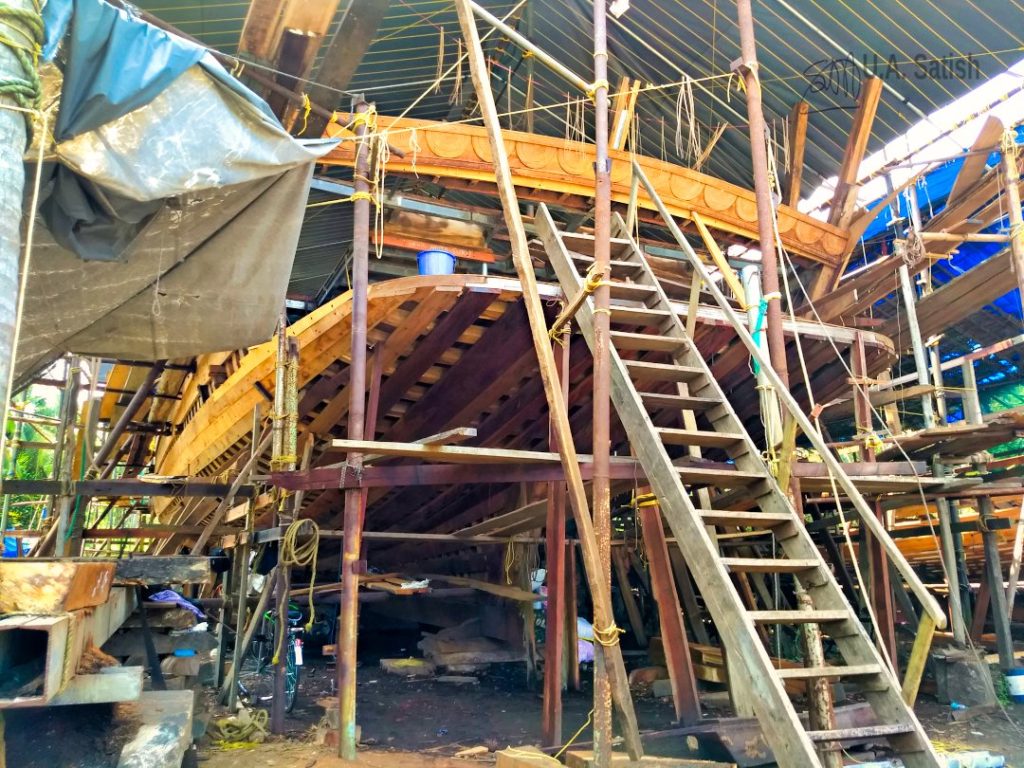
The craftsmen use teak wood in making of the boats. Teak comes from the forests of Nilambur, 150 km upstream. Malaysian wooden logs are also used. The hull mainly employs teak. The interiors contain jackfruit wood and rose wood. About 5,000 cubic feet of wood and four tons of iron go into the making of a standard vessel. The workers mostly use traditional Kerala carpentry tools.
In the first two months, 5 to 10 craftsmen work on building the boat. After the skeletal frame is ready, the workforce goes up to twenty. The time frame for completion of work is 10 to 12 months. A further couple of months go by to get the customs permissions to take the Uru to distant shores.
History of the Uru
Boat building thrived during reign of the Zamorins who ruled Kozhikode from twelfth to the eighteenth century. The skilled carpenters handled the making of Urus for the Zamorin’s navy. The business continued to develop after India’s independence. But a reversal of fortunes happened in the 1970s due to decline in the demand for urus. Orders have picked up in recent times. Wealthy members of the Qatar royal family are among the customers.
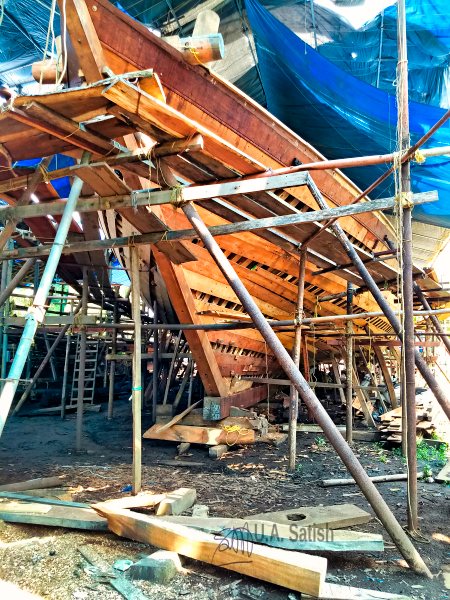
There are a few types of Uru to meet different customer needs. There is the flat bottomed Zambuk, the Boom which has huge cargo space, the Bahala with elaborate carvings and the sleek Breek. The Breek comes with Indian as well as Arabic designs.
Launching the Boat
Khalasis or dockyard workers usually launch the Uru. Beside Uru making, the skill set of Khalasis were also used in the construction of Idukki Dam, Feroke Bridge, Vadakkumbadu Bridge and Mahanadi Bridge. They use the pulley-wheel method to roll the boat on a bed of logs and float it out into the water. The effort uses round logs, wooden rollers, steel ropes, wooden pulleys and winches.
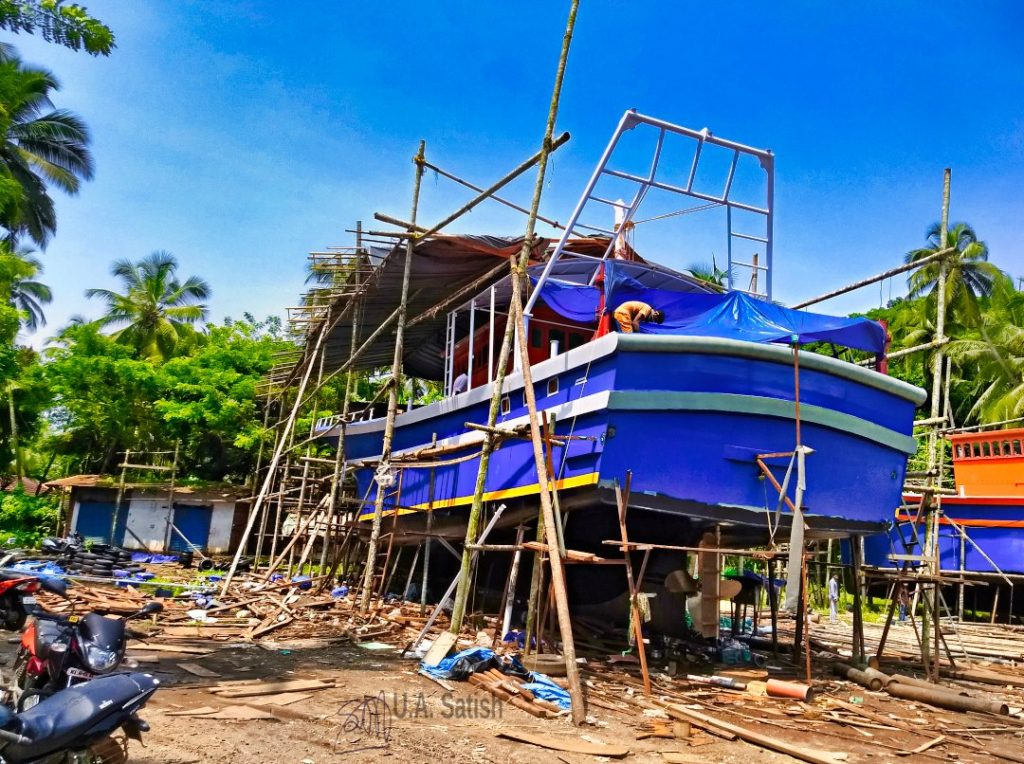
The Uru later sets sail to Dubai for fitting of luxury interiors and installation of the engine. It will contain luxury bedrooms, a modern kitchen, contemporary navigation systems, satellite communication and powerful engines. The price of an Uru typically range between ₹5 to 10 crores.
Getting to the Uru Building Yard
The yard is 9.3 km (21 min) from Kozhikode railway station. Go along the Beypore Cheruvannur road till you reach Veterinary Hospital Beypore. From there, it is a short walk of 100 m to the yard which is on the banks of River Chaliyar. Kozhikode International airport is a drive of 20.1 km (42 min).
If you liked the post, you could…
Join more than 5,000 fans of UASATISH by liking us on Facebook, or follow us on Twitter and Instagram.
Related Stories
